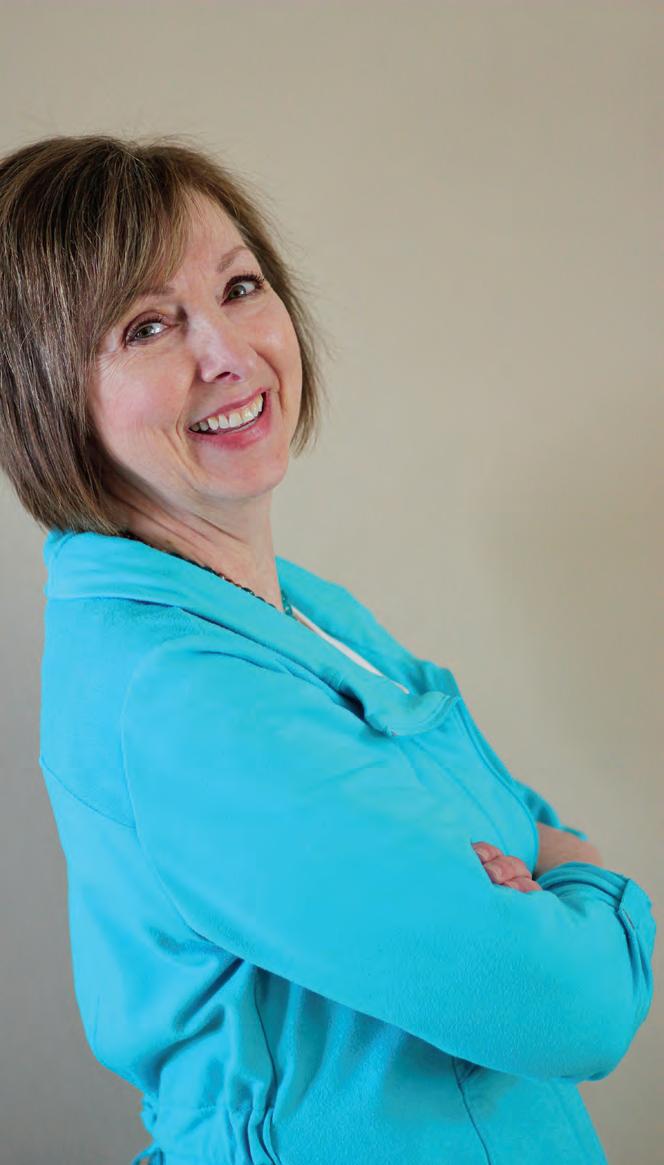
3 minute read
regenerative medicine
Offers Hope And Healing To People In Pain
FRAN
Mayer is one of the 31 million Americans with osteoarthritis. According to the Arthritis Foundation, osteoarthritis is the leading cause of disability among adults in the United States.
Osteoarthritis in her hip and knee made it difficult to do what life demanded. Mayer has battled knee pain for the past 10 years, undergoing cortisone injections, followed by knee arthroscopy, followed by more cortisone injections, without finding permanent relief. Last year, the pain in her hip reached the point where she sought cortisone injections.
“Experiencing chronic pain became a constant battle to fight the physical discomfort as well as the emotional side effects,” says Mayer, who works as a paraprofessional at Central Cass Elementary School in Casselton where she and her husband, Kevin, are empty nesters. “Pain affected my mood, sleep and my relationships,” she adds.
The cortisone injection treatments were becoming increasingly less effective, yet the 50-something Mayer was too young for knee replacement surgery. When Mayer saw a television commercial featuring the Center for Pain Medicine in Fargo, she made an appointment to see Dr. Majid Ghazi, a board-certified anesthesiologist and interventional pain physician. And for the first time in several years, Mayer found hope. She learned of a new treatment option: regenerative medicine.

“Regenerative Medicine is a new area in medicine which utilizes the body’s own biologic,” Ghazi says. “The therapy is intended to assist and to potentially replace or restore damaged tissue. The field of regenerative medicine is expanding rapidly, creating new options for the treatment of musculoskeletal and spinal pain.”
Many professional athletes, including Tiger Woods, Peyton Manning and Kobe Bryant, have looked to regenerative medicine to overcome injury.
Mayer opted for stem cell therapy, a treatment in which adult stem cells are extracted from pelvic bone marrow, processed in a centrifuge, and then re-injected into the damaged joint under X-ray or ultrasound.

Patients are under intravenous sedation, known as conscious sedation, during the out-patient procedure, which is performed in the center’s in-house operating room in a sterile environment. “Overall, the bone marrow harvesting is not painful, and most patients have tolerated it well and return to work the next day,” says Joan Quam, a registered nurse at the center.
Unlike cortisone injections or surgery, stem cell therapy immediately stimulates the new growth of cartilage, tendons, ligaments, bone and Dr. Majid Ghazi fibrous connective tissues. And patients experience a reduction in pain in four to six weeks.
Ghazi administered the stem cell therapy injections to her knee and hip in the same day, and Mayer required no downtime for recovery. Next, she worked with a physical therapist from PT/OT Partners, which is housed in same building, to strengthen the muscles surrounding her joints to better protect the joints. Within two months, she was able to perform her physical therapy regimen as well as to ride bike and garden with considerably less pain. She also regained the ability to sleep better. And most importantly, Mayer could play with her 3-year-old grandson — and fully enjoy it.
Mayer continues to gain improvements in her knee and hip since her June 2018 stem cell therapy injections. “No medical procedure is guaranteed; but of all the procedures we do here, stem cell therapy has been the most effective,” Ghazi adds.
Recently, she opted for a platelet rich plasma injection in her right foot to treat plantar fasciitis, and she’s seeing incremental improvements. In this treatment, Mayer’s blood was drawn and spun in a centrifuge, and then re-injected into her foot.
“Plantar fasciitis is a common problem, but unfortunately, there are not a lot of options if physical therapy is not effective,” Ghazi says. “Multiple cortisone injections can be damaging to soft tissue and surgery is not always effective.”
Regenerative medicine provides hope to people who have tried anti-inflammatory medication, steroids or injections, and surgery without success. “Surgical interventions are highly invasive requiring surgical resection of all or parts of the joint and insertion of a prosthesis,” Ghazi says. “Complications can be significant, and some patients develop chronic pain.”

“With the support of my husband, stem cell therapy and physical therapy, I have experienced lasting relief in my knee and hip,” Mayer says. “Before my heart was in it, but now I am fully able to exercise, bike and garden. The stem cell therapy has been a good investment in my health and my future.”
“Dr. Ghazi and the entire staff are very kind and caring,” Mayer adds. “They treat you like an individual. Dr. Ghazi understood the pain I was experiencing because he’s treated so many others.”

FOR MORE INFORMATION about the Center for Pain Medicine, call 701-551-6980 or visit centerforpainfargo.com [ aw april.may











